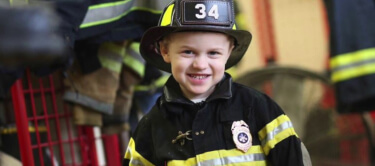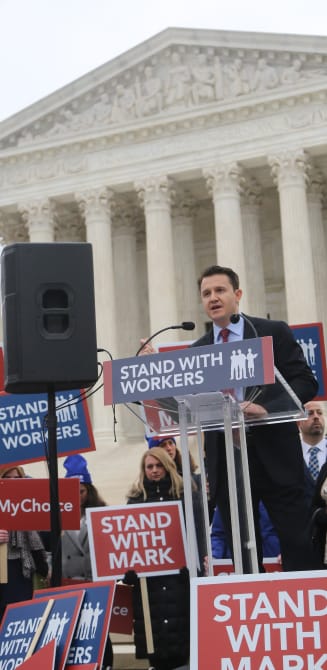January 8, 2020
By Jonathan Butcher
In the first
part of this series, Washington’s failed intervention into local school
safety policy was laid bare. Federal directives incentivized districts to
manufacture school discipline rates, which led some school systems to report
unreliable information.
Furthermore, administrative
decisions to limit suspension and expulsion have resulted in disruptive and
sometimes dangerous students being left in the classroom.
Just ask Florida. A new report
from the South Florida Sun-Sentinel, which won the Pulitzer Prize for its coverage of the “failings by
school and law enforcement officials before and after” the Parkland shooting,
explains that state law can even require that schools not sanction dangerous
students.
“The same laws that protect
disabled students make it difficult for schools to remove a student,” such as
the “profoundly disturbed” student that committed the Parkland atrocity, says
the Sun-Sentinel. “Violent students have injured thousands of teachers, bus drivers and
staff in Broward County alone and undoubtedly thousands more across Florida,”
wrote the paper.
Likewise, studies from Philadelphia, Pittsburgh, and Chicago, to name a few, have found negative outcomes for the
peers of offending students when disruptive students remain in class. These
reports are not the end of school discipline policy debates—if only social
science could be so conclusive—but the combination of randomized research
methods and qualitative techniques producing consistent findings in these
studies is highly persuasive.
But does teacher bias against students from different backgrounds
explain disciplinary decisions? In fact, data demonstrate that students from
different backgrounds exhibit different behaviors, which helps explain
different school discipline rates. The Manhattan Institute’s Heather MacDonald
and the University of San Diego Law School’s Gail Herriot, a member of the U.S.
Commission on Civil Rights, have each supported this position using social
science research and data from the U.S. Department of Education’s “Indicators of School Crime and Safety.” This report tracks
gang and drug activity in schools, and more minority students report being
involved in fights, for example, as well as in other risky behaviors at school
in this survey.
One researcher that has documented findings in favor of limiting
exclusionary discipline also says that factors pointing to bias among educators
is not conclusive. A study from 2002 cited by both the federal Dear Colleague
Letter (DCL) discussed in part 1 of this blog and Herriot’s research wrote, “In and of itself, however,
disproportionality in school discipline is not sufficient to prove bias in the
administration of discipline.”
The research from Philadelphia and Chicago cited above suggests that
school assignment according to ZIP code results in high concentrations of
minority students from the same dangerous neighborhood, often with troubled
backgrounds, attending the same schools. This can result in some schools having
high rates of discipline compared to schools in other areas. The Chicago
researchers write that the “concentration of many low-achieving students from
high-poverty neighborhoods…seems to increase the likelihood that a school will
have high suspension rates.”
One of the
Philadelphia study’s authors commented on his
research
saying:
Particularly in urban schooling
contexts, we know that residential location, particularly for minority
students, means that these students are coming from neighborhoods with higher
crime rates, higher poverty, quite a bit more life trauma and what we are doing
is sorting these students into the same schools and really concentrating
disadvantage and therefore likely concentrating behavioral issues within the
same school, and, as a result we may be seeing higher rates of school
discipline.
School assignment is a good place to start, then, to form effective
policy. Florida lawmakers have enacted a proposal that allows bullied students
to choose private schools, while Arizona lawmakers considered a similar
proposal earlier this year.
Parents, teachers, and school leaders are the adults who are closest to
children each day, and policymakers should allow them to make decisions in
students’ best interests. The federal task force that called for rescinding the
DCL described in part 1 of this series wrote that teachers “have an
understanding of the students entrusted to their care and can see behavioral
patterns on an ongoing basis.” In some cases, suspension or expulsion may not be
appropriate—while these measures may be just what a student needs in other
instances.
Research speaks to this point, as well. A study by
researchers at Princeton using data from non-intact families found that “facilitating school involvement
from minority parents may be the most efficacious way to reduce racial
disparities in suspension.” This research could not use randomized controls
that help to limit outside factors influencing the results, but this recommendation,
paired with the school-assignment analyses from other studies, underscores the value
of policies that allow parents to decide where and how children learn.
The lesson for policymakers as we begin a new decade is that federal
orders and other mandates to keep exclusionary discipline at certain levels
should not hover in the background to distract educators. Parents and educators
have a critical job to keep children safe, no matter a child’s background or
the color of their skin.
Jonathan Butcher
is a Senior Fellow at the Goldwater Institute. A portion of this analysis can
be found in Jonathan’s testimony before the Pennsylvania Advisory Committee to
the U.S. Commission on Civil Rights on November 19, 2019.










